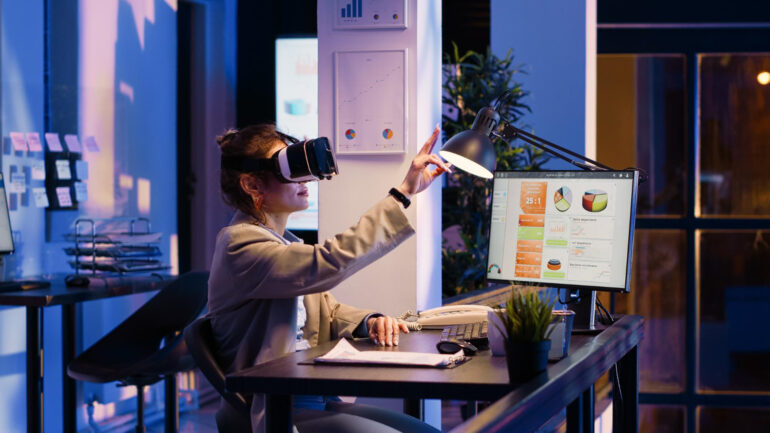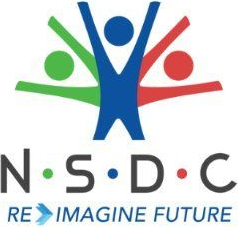The Shifting Sand of Future of Work – Innovation vs. Convention

Part 1
The nature of work is undergoing an irreversible transformation influenced by generational shift, technological advancements, evolving workforce expectations, and shifting organisational structures. This
calls for a re-evaluation of leadership approaches
According to Microsoft’s Employee Well-Being Report, the mean score for employee happiness at work was 75.2 on a 0-100 scale as of March 2022. This metric remained relatively steady over the preceding 12 months, indicating consistent employee satisfaction levels. Microsoft serves as a model for embracing workplace transformation through hybrid work and AI-driven tools. Yet, across industries, not all organisations are leaning into this future. Some are resisting change, choosing to stay rooted in traditional ways of working, often citing concerns about productivity, cultural cohesion, or operational control.
Goldman Sachs and JP Morgan Chase have taken a firm stance against remote work. Goldman CEO David Solomon famously called remote work an “aberration,” emphasising the importance of in-office collaboration for fostering mentorship and building a cohesive organisational culture. Similarly, JP Morgan Chase has mandated that employees in certain roles return to the office full-time, arguing that face-to-face interaction is critical for productivity and client engagement.
This duality – the push for innovation versus the pull of convention – highlights the complexity of navigating the changing landscape of work. In India we often find a tug-of-war between employees reluctant to give up remote work, and organisations insisting on return-to-office. Several leading IT companies now have adopted a three-day in-office work.
Nevertheless, as the debate rages, all of us must accept that the very nature of work is undergoing a profound and irreversible transformation, influenced by generational shift as youngsters born after 2000 are joining the workforce; laser speed technological advancements, evolving workforce expectations, and shifting organisational structures. This metamorphosis necessitates a re-evaluation of leadership approaches to effectively navigate the complexities of the modern workplace.
Microsoft’s journey exemplifies how deeply work is evolving, influenced by key drivers such as technological advancements, shifting workforce expectations, and economic realities.
Factors Driving Change in the Workplace
- Technological Advancements:The rise of artificial intelligence (AI), automation, and collaborative tools is fundamentally reshaping how work gets done. Tasks that once required hours of manual effort are now automated, freeing employees to focus on strategic initiatives. Generative AI tools like ChatGPT and Copilot are enabling professionals to draft reports, create presentations, and analyse data more efficiently. For instance, Walmart uses AI to optimise supply chain logistics, enabling real-time adjustments to improve delivery speed and reduce costs.
- Workforce Expectations:Employees today value flexibility, autonomy, and purpose in their roles. According to LinkedIn’s Work Change Snapshot, 25% of professionals feel challenged to prove their effectiveness while working remotely, highlighting the tension between employer expectations and employee preferences. The demand for remote and hybrid work options remains strong, yet companies like Apple are rethinking flexibility by encouraging employees back to the office to strengthen in-person collaboration.
- Economic and Competitive Pressures:Companies are operating in an environment of heightened competition and economic uncertainty. To stay agile, organisations are flattening hierarchies, adopting agile practices, and creating roles like Chief Digital Officer (CDO) to drive transformation. For example, Unilever introduced a CDO role to lead its global digital agenda, enabling faster decision-making and greater resilience in the face of market disruptions.
The Depth of Workplace Transformation
The changes in the workplace go beyond superficial adjustments – they represent a seismic shift in how organisations operate, measure success, and engage talent.
- Skill Transformation:The half-life of skills is shrinking, with LinkedIn reporting that the skills required for most jobs will change by 40% in the next five years. Fields like data science, sustainability management, and AI ethics have emerged as critical areas of expertise. Salesforce, for instance, launched “Trailhead,” a digital learning platform to upskill employees and customers, ensuring they stay relevant in an AI-driven marketplace.
- Redefinition of Job Roles:Jobs are no longer confined to predefined silos. Companies like Amazon are pioneering roles such as “robotics safety specialists,” blending human oversight with automated systems. Similarly, the rise of “BYOAI” (Bring Your Own AI) is empowering employees to use personal AI tools to enhance productivity.
- Cultural Overhauls:Corporate culture is also transforming to accommodate a distributed and diverse workforce. Atlassian, the software company, emphasises asynchronous work practices, allowing employees across time zones to collaborate effectively without adhering to rigid schedules. This reflects a broader shift toward valuing outcomes over hours worked.
What This Means for the New Generation of Leadership
The evolving workplace landscape demands a new breed of leaders equipped with unique skills and perspectives.
- Tech-Savvy Leadership:Leaders must be well-versed in emerging technologies, not just as tools but as strategic enablers. Sundar Pichai, CEO of Alphabet, has championed AI-first strategies across Google’s operations, demonstrating how leaders can harness innovation to stay ahead of the curve.
- Emotional Intelligence (EQ):As teams become more dispersed, the ability to connect with employees on a human level is critical. Leaders like Satya Nadella at Microsoft emphasise empathy, ensuring that employee well-being is a priority alongside business performance.
- Adaptability:Leaders must navigate constant change with agility and openness. IBM’s appointment of a Chief Transformation Officer highlights how companies are institutionalising adaptability to thrive in volatile environments.
- Diversity and Inclusion Champions:Diverse teams drive innovation, and inclusive leaders create environments where all voices are heard. For example, PepsiCo’s CEO Ramon Laguarta has embedded DEI (diversity, equity, and inclusion) into the company’s business strategy, demonstrating its value as a driver of performance.
Shifting Organisational Structures
The dynamic nature of the modern workplace is prompting organisations to reassess their leadership structures. The traditional hierarchical model is giving way to more collaborative and flexible frameworks. Companies are introducing new C-suite roles, such as Chief Transformation Officer and Chief Experience Officer, to drive innovation and adaptability. This evolution reflects the need for leadership that can navigate the complexities of digital transformation and changing workforce dynamics.
—
Keep reading in Part 2 about what the changing landscape of work implies for future leadership, case studies on successful transformations, how resistance to change can dearly cost companies, and the role ofleadership in balancing tradition and transformation.
[To be concluded]


